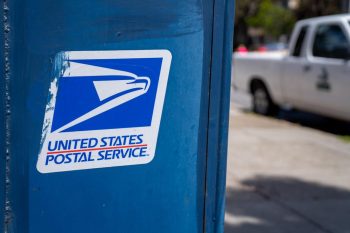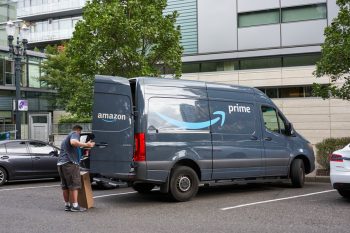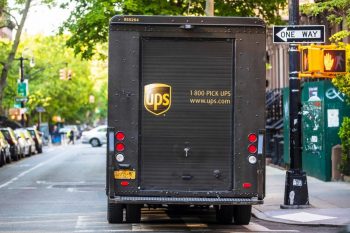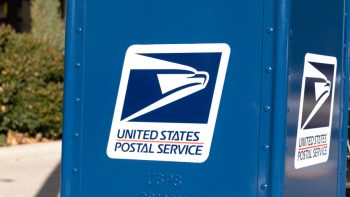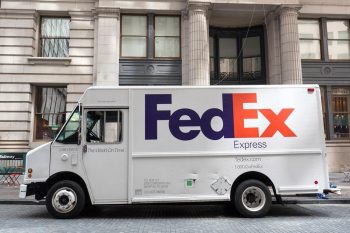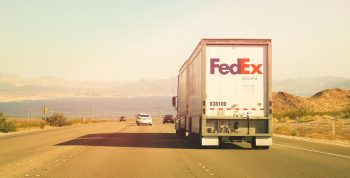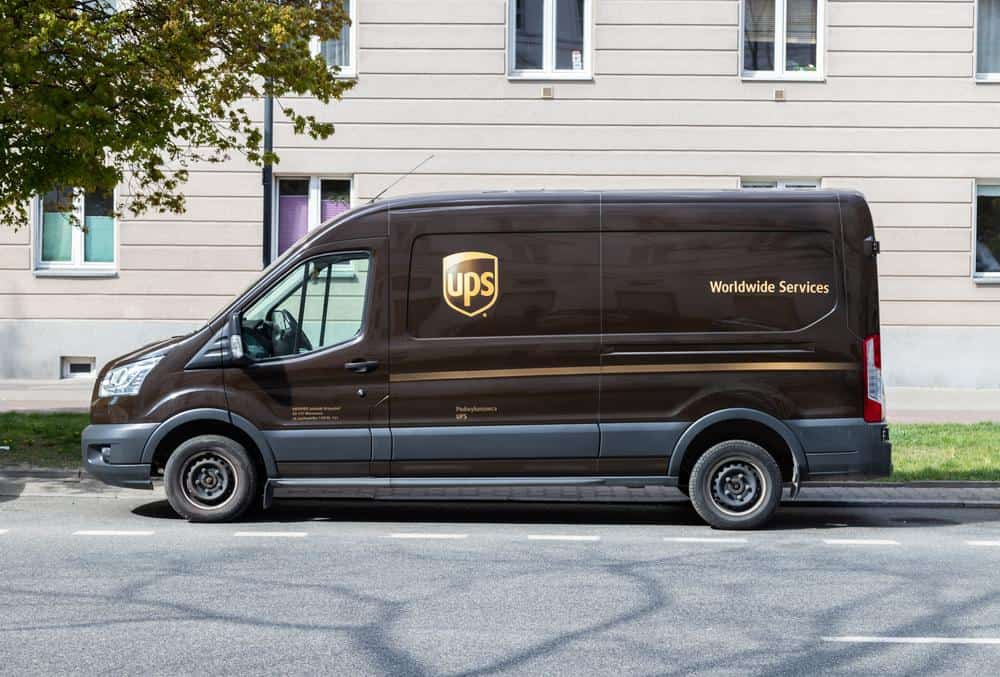
UPS, or United Parcel Service, is a multinational package delivery and supply chain management company. It is renowned for its brown trucks that deliver parcels to homes and businesses all over the world. But have you ever wondered how far a UPS vehicle travels in a day? Let’s delve into the details.
On an average day, a UPS vehicle travels approximately 125 miles. However, the actual distance can vary depending on several factors, including the location of the delivery, the route taken, and the specific delivery requirements for that day. UPS uses its proprietary system, ORION, to optimize delivery routes, which also influences the daily travel distance.
Average Daily Travel Distance
On an average day, a UPS vehicle covers approximately 125 miles. This is roughly equivalent to the distance between New York City and Philadelphia. However, the actual distance can vary depending on factors such as the location of the delivery, the route taken, and the specific delivery requirements for that day.
Package Delivery Volume
UPS drivers deliver an impressive number of packages each day. On average, a driver delivers between 225 or more packages daily. To put this into perspective, if each package was a mile, it would be like driving from Los Angeles to San Diego and back. In 2022, UPS delivered an average of 24.3 million packages per day, which totals a staggering 6.2 billion packages during the year.
Factors Influencing Travel Distance
The travel distance of a UPS vehicle in a day is influenced by several factors:
- Route optimization: UPS uses its proprietary On-Road Integrated Optimization and Navigation (ORION) platform to optimize delivery routes. This system uses advanced algorithms, artificial intelligence, and machine learning to update routes throughout the day based on traffic conditions, delivery and pickup commitments, and special delivery needs.
- Number of stops: UPS drivers typically complete an average of 135 stops each day. The more stops there are, the more miles a driver will cover.
- Traffic and weather conditions: Traffic congestion and weather conditions, such as rain or snow, can affect the travel distance of a UPS vehicle as they may cause delays or require alternative routes to be taken.
- Road grade (slope): The grade of the road can also impact the travel distance of a UPS vehicle. Uphill driving requires more energy, while downhill driving can help conserve energy.
- Driver behavior: The driving habits of UPS drivers can also impact the travel distance of a UPS vehicle. Efficient driving techniques, such as maintaining a consistent speed and avoiding rapid acceleration or deceleration, can help conserve fuel and increase travel distance.
Environmental Impact
UPS’s daily travel distance has a significant impact on the environment due to its large-scale operations and the transportation sector’s contribution to global greenhouse gas emissions. The company is working on various initiatives to reduce its environmental footprint, including investing in alternative fuel and advanced technology vehicles, and improving the efficiency of its delivery routes.
Strategies for Reducing Travel Distance
UPS employs several strategies to reduce its daily travel distance and environmental footprint. These include the use of eco-trucks which carry larger loads than standard delivery trucks, the purchase of renewable natural gas (RNG), offering a carbon neutral shipping program, and the implementation of route optimization through their ORION platform.
Conclusion
In conclusion, the daily travel distance of UPS vehicles is a complex interplay of various factors, including route optimization, number of stops, vehicle type, traffic and weather conditions, road grade, and driver behavior. Through advanced technology and conscious efforts, UPS is continually working on reducing its travel distance and environmental footprint, ensuring a more sustainable future for all.
Frequently Asked Questions
What is the UPS Carbon Neutral Shipping Program?
The UPS Carbon Neutral Shipping Program is an initiative that allows UPS customers to counterbalance the carbon dioxide emissions generated by the transportation of their packages. For each package shipped, a small fee is added to the shipping cost, which UPS then uses to purchase certified carbon offset credits. These credits are used to fund various environmental projects around the world.
What is Renewable Natural Gas (RNG) and how does UPS use it?
Renewable Natural Gas (RNG), also known as biomethane, is a type of biofuel that is produced from organic waste materials. UPS uses RNG in its delivery vehicles as an alternative to conventional diesel or gasoline. The use of RNG helps to significantly reduce greenhouse gas emissions from UPS’s operations.
How does the On-Road Integrated Optimization and Navigation (ORION) platform work?
ORION is a proprietary platform used by UPS to optimize delivery routes. It uses advanced algorithms, artificial intelligence, and machine learning to continuously update routes throughout the day. It takes into account various factors such as traffic conditions, delivery and pickup commitments, and special delivery needs. By optimizing routes, ORION helps to reduce the travel distance of UPS vehicles, thus saving fuel and reducing emissions.
What are eco-trucks and how do they help reduce UPS’s travel distance?
Eco-trucks are delivery vehicles that are designed to carry larger loads than standard delivery trucks. By carrying more packages in a single trip, eco-trucks can help to reduce the number of trips needed to deliver the same number of packages, thereby reducing the total travel distance. UPS uses eco-trucks as part of its strategy to reduce its environmental footprint.




